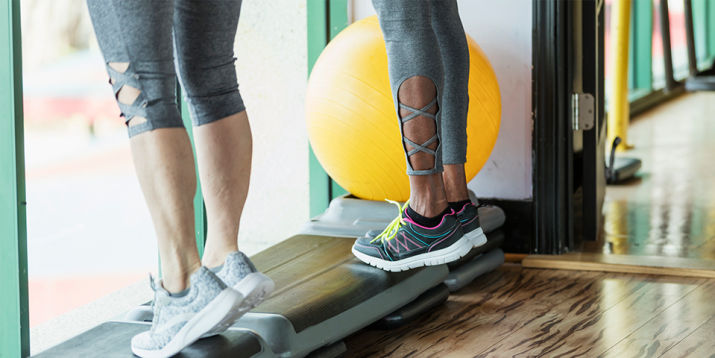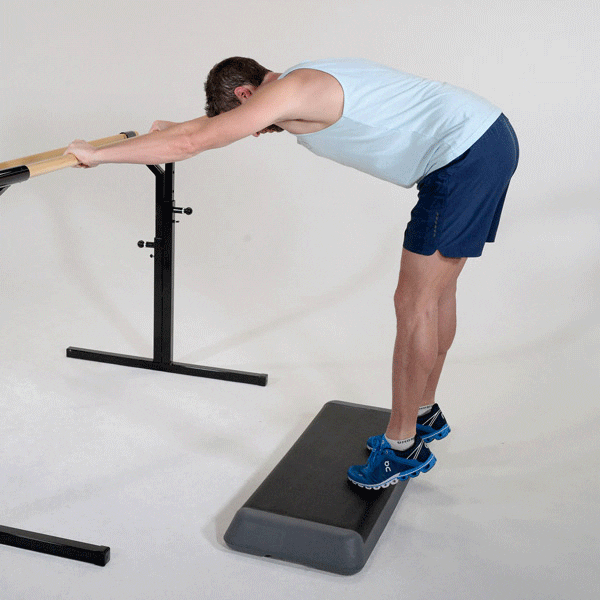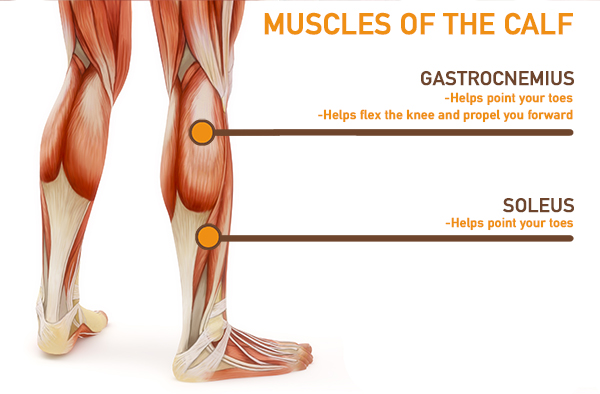How to Do the Donkey Calf Raise

If you’re bored to death with standing calf raises, it may be time to swap them out with something a little more interesting: The donkey calf raise.
Here’s what you need to know about this twist on the classic standing calf raise.
Donkey Calf Raise: Step-by-Step Instructions

- Place an aerobic step or weight plate on the floor a couple of feet behind a railing or other sturdy, waist-high object.
- Holding the railing with both hands, fold forward at your hip joints, and place the balls of your feet on the far edge of the step.
- Slowly lower your heels as far as possible toward the floor, pausing for a one-count in the stretched position.
- Lift your heels as high as possible, squeezing your calves at the top of the move, and hold for a one-count.
- Take a full three-count to lower your heels to the floor, and repeat.
Muscles Targeted By the Donkey Calf Raise

The donkey calf raise exercise targets the two major muscles of the calf: the gastrocnemius (or simply gastroc) and the soleus.
Gastrocnemius
The donkey calf raise primarily hits the gastroc, says Jennifer Novak, MS, CSCS, performance recovery coach and founder of PEAK Symmetry Performance Strategies.
When well-developed, the gastroc is the outwardly visible muscle you see when you look at someone’s calves.
It has two heads — a medial and a lateral — and crosses the knee joint, which means it helps to bend the knee and flex the foot downward (known as plantarflexion), according to Novak.
The gastroc is also roughly 50/50 slow-twitch versus fast-twitch muscle fibers, giving it a greater percentage of the latter than the soleus, and subsequently more explosive capacity.
Soleus
The soleus, which is situated under the gastroc, doesn’t cross the knee joint. So its function is limited solely to helping flex the foot downward (a.k.a. plantarflexion).
And where the gastroc’s composition is evenly split between fast- and slow-twitch muscle fibers, the soleus is majority slow-twitch muscle fiber, according to Novak.
As such, the soleus helps more with endurance-focused activities, like standing, walking and jogging.
Benefits of the Donkey Calf Raise
Incorporating donkey calf raises into your strength routine is a great way to beef up your gastroc and soleus, which will boost your performance in other sports and activities: “We need to train these muscles because plantarflexion of the foot is a key component of gait and sport movement,” Novak says.
Having strong gastroc and soleus muscles may also support your Achilles tendon, helping this band of thick tissue do its job better.
Your calf muscles unite to form your Achilles tendon — the largest tendon in your body.
The Achilles tendon, in turn, connects your calf muscles to your heel bone, and provides the spring-like energy you need to accelerate, decelerate, and land safely during power moves.
“When the Achilles possesses an ideal amount of elasticity, it can dissipate force applied to the muscles, thereby potentially lowering the risk of muscle injury, like a strain or a tear,” Novak explains.
